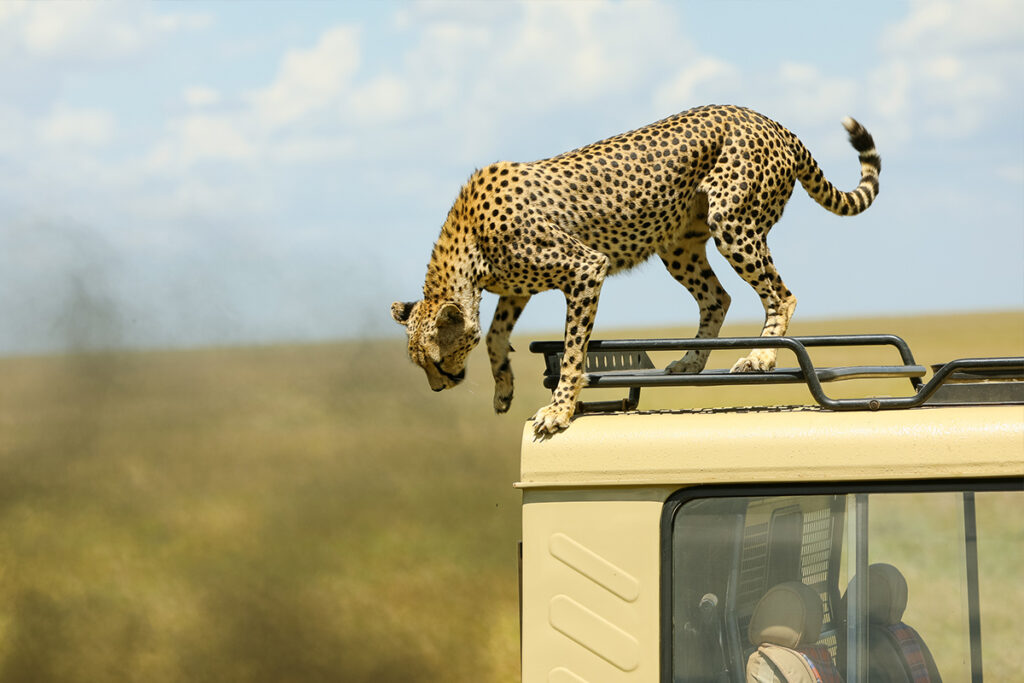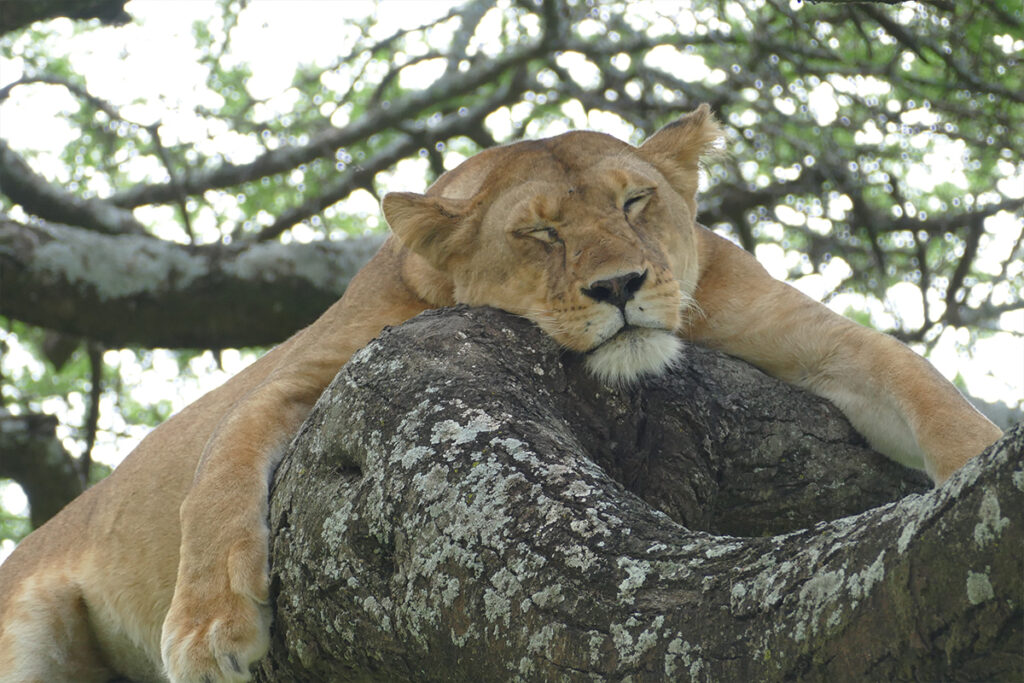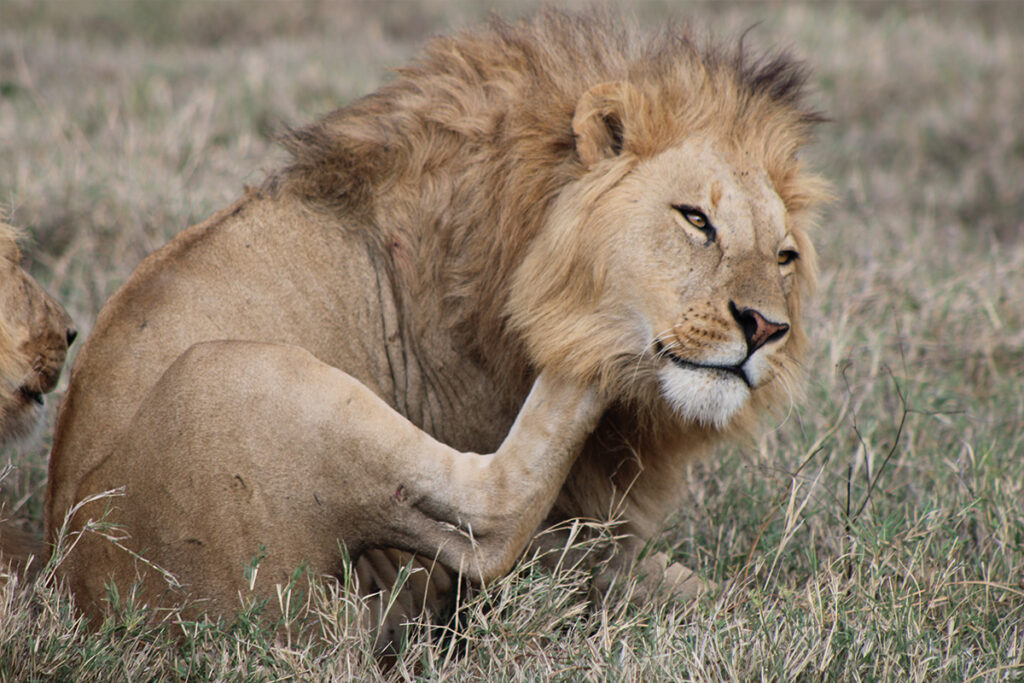Every year, Tanzania’s landscape transforms into a vibrant green canvas during the wet season, attracting both life and adventurers. This period showcases unparalleled biodiversity, as migratory birds flock to and from the African wetlands. It’s the optimistic hum of life, much like nature’s orchestra at full crescendo, that defines this Tanzanian spectacle.
Renowned for its iconic wildlife, the wet season casts a fresh lens on Tanzania’s charm. Historically, this season offers the unique phenomena of the Great Migration, a cycle as rhythmic as any timeless narration. With tourism statistics upwards of a million visitors annually, the period is rich with attraction, immersing travelers in an authentic Tanzanian narrative, unfiltered by peak season throngs.
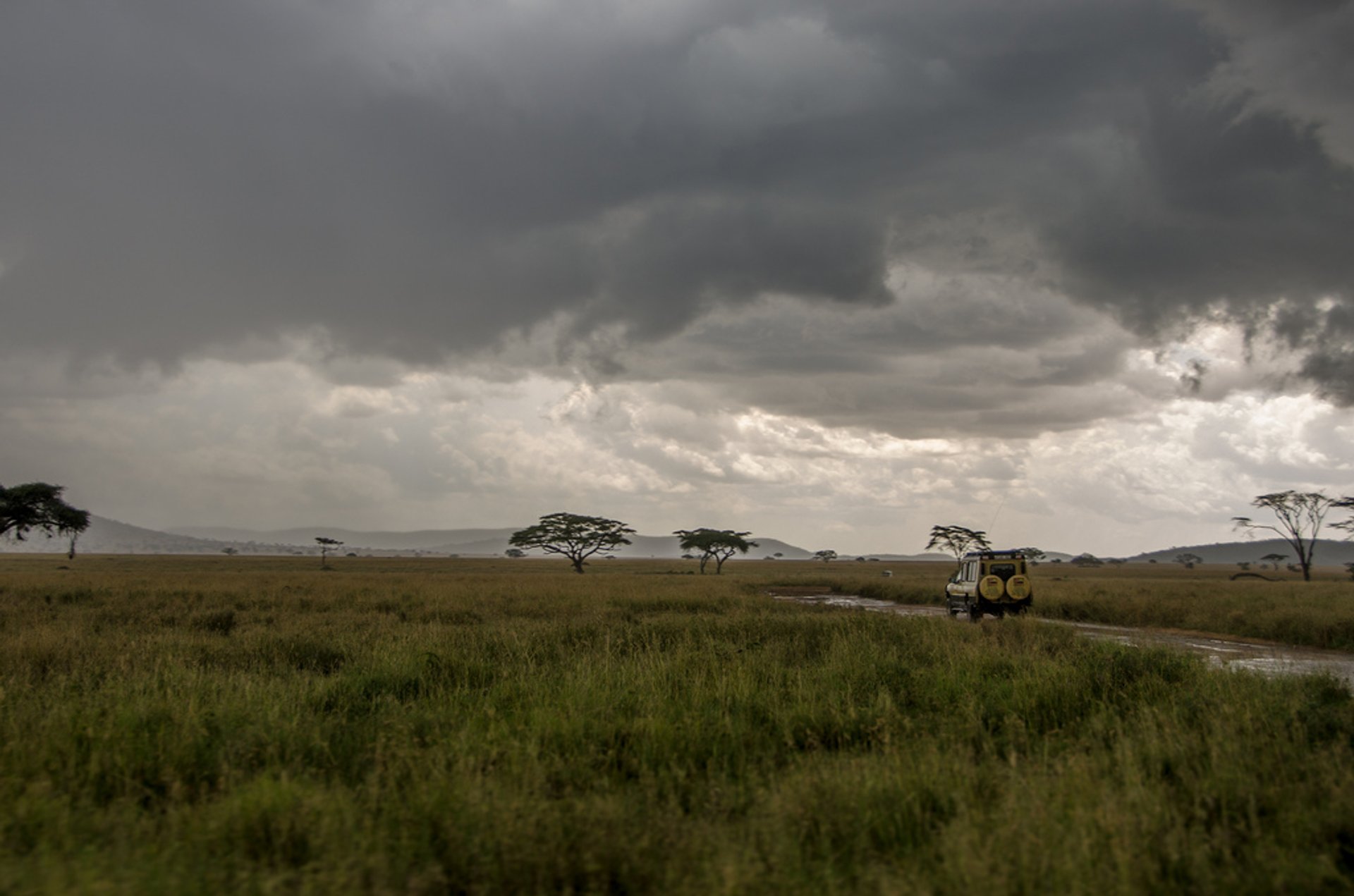
Wet season safari Tanzania
Embarking on a wet season safari in Tanzania offers travelers a unique and thrilling experience. As rain showers refresh the lush, green landscapes, the scenery transforms into a vibrant paradise. This season, from November to May, reveals the pristine beauty of Tanzanian parks without the crowds seen during drier months. Additionally, it’s an opportune time to witness young animals as many births align with the abundant season. These newborns add another layer of excitement to the safari adventure.
The wet season also showcases the Great Migration, a spectacular event where millions of wildebeest, zebras, and gazelles trek across the Serengeti. Watching these animals navigate through rivers, with predators lurking nearby, is a heart-pounding experience. Each phase of the migration brings dramatic scenes that leave visitors in awe. It is nature’s grand theater, performed on an epic scale. Witnessing this marvel is truly a bucket-list item for many wildlife enthusiasts.
One of the most compelling aspects of a wet season safari is the increased biodiversity. The variety of birds, insects, and smaller mammals is often more noticeable during this time. Vibrant flowers bloom, turning the savannah into a picturesque landscape. According to this post, walking safaris in places like Tarangire offer an intimate way to experience this diversity. It’s an unparalleled opportunity to immerse oneself in the microcosms often overlooked from a jeep.
Despite the occasional downpour, the wet season is a fascinating time for tourism in Tanzania. Fewer tourists mean more exclusive encounters with wildlife and landscapes. Additionally, the season can offer more affordable travel options and less crowded lodges, enhancing the overall experience. Resources such as here is the article suggest planning and booking ahead to optimize the adventure. Trekking through the green expanses of Tanzania during this season can reveal the country’s raw, unfiltered beauty.
The unique charm of Tanzania during the wet season
The wet season brings a magical transformation to Tanzania. Lush landscapes emerge as rainfall revitalizes the environment, creating a stunning green panorama. Waterfalls gain power, and rivers brim with life, enhancing the region’s natural beauty. These vivid changes turn Tanzania into a scenic paradise that captivates visitors. Even seasoned travelers find new wonders during this period.
Animal behavior becomes particularly fascinating as the wet season unfolds. Many species give birth during this time, ensuring plenty of sightings of adorable young animals. Elephants, for example, are often seen with their tiny calves, adding a heartwarming touch to any safari. Predatory activity also ramps up, making for thrilling natural encounters. Observing these dynamics offers insights into the survival strategies of various species.
Birdwatching reaches its peak in the wet season due to the arrival of migratory birds. Over 1,100 bird species flock to Tanzania, making it a paradise for bird enthusiasts. The vibrant colors and diverse songs fill the air, creating an enchanting experience. Nature lovers can spot rare birds such as the Fischer’s lovebird and Nubian woodpecker. This avian spectacle is a captivating bonus to any safari adventure.
The wet season also highlights Tanzania’s cultural richness. Traditional activities and ceremonies flourish, providing visitors a glimpse into local customs. Villages often host vibrant festivals that celebrate the rains and their significance. Attending these events allows travelers to connect with the local community and understand their way of life. It’s an immersive experience that adds depth to the safari journey.
The Great Migration as a compelling wet season event
The Great Migration stands as one of nature’s most breathtaking spectacles. During the wet season, over 1.5 million wildebeest, alongside zebras and gazelles, traverse the Serengeti in search of fresh grazing land. This massive movement is not just about numbers; it’s a survival story that unfolds every year. The drama intensifies as predators like lions and crocodiles lie in wait. Witnessing this migration provides unmatched excitement and anticipation.
Midway through the journey, the herds face the challenge of crossing treacherous rivers. These crossings are some of the most dramatic moments to observe. Animals leap into the water, navigating strong currents while avoiding waiting crocodiles. Many species are seen helping each other, highlighting the sense of unity within the herds. This river crossing is often considered the pinnacle of the migration experience.
Photography enthusiasts find the Great Migration a goldmine of opportunities. With so much action and the stunning backdrop of the Serengeti, capturing moments is a thrill. The interaction between prey and predator, the birth of new calves, and the dynamic landscapes make every shot unique. Tips for the best shots include being patient and ready to click at a moment’s notice. Early mornings and late afternoons offer the best light conditions for photography.
Experiencing the Great Migration during the wet season means fewer tourists and more intimate wildlife encounters. Safaris during this time offer a peaceful and exclusive feel. The wet season also brings lower prices for accommodations and tours, making the adventure more accessible. Lastly, the landscapes are lush and vibrant, providing beautiful backdrops for all the action. This unique combination makes a visit during the wet season particularly appealing.
Biodiversity in Tanzania enhanced in the wet season
Tanzania’s biodiversity reaches its peak during the wet season, transforming the landscape with life and color. Rain showers awaken dormant seeds, covering the ground with a rich tapestry of wildflowers. This vibrant bloom attracts countless birds, insects, and other species. Animals take advantage of the abundant water sources, gathering around newly filled lakes and ponds. This season becomes a feast for creatures large and small.
The range of birdlife during the wet season is unparalleled. Migratory birds arrive from far-off places, joining local species in the bountiful environment. A variety of birds like flamingos and vultures are regularly spotted feeding on the abundance. Tanzania offers a paradise for birdwatchers, with over a thousand species on display. Enthusiasts revel in the chance to see such diversity in one place.
Plant life also thrives remarkably well during this time. The lush greenery provides food and shelter for numerous animals. Many species, including elephants and giraffes, find ample foliage to snack on. The ecosystem becomes a vivid classroom where balance and interdependence are evident. These interactions between flora and fauna showcase the harmony of nature.
Marine life experiences a surge as coastal waters teem with activity. Fish populations increase, while coral reefs burst with colorful marine species. The wet season supports a healthy aquatic ecosystem, crucial for communities relying on fishing. Coastal tourists can explore these vibrant underwater worlds through scuba diving and snorkeling. Observing these thriving marine systems adds another layer to Tanzania’s biodiversity appeal.
National parks become lush havens rich with unique experiences. Rainforests within parks become dense, offering protection for primates such as chimpanzees. Animal tracks appear frequently, revealing the passage of unseen wildlife. Meanwhile, conservation projects continue to study and protect these precious habitats. Every visit supports efforts to preserve Tanzania’s natural wonder.
The impact of the wet season on Tanzanian tourism
The wet season significantly reshapes Tanzanian tourism by offering unique challenges and opportunities. Rainy weather often deters some travelers, leading to fewer tourists compared to the dry season. This results in more intimate wildlife viewing experiences, as parks and lodges are less crowded. Lower visitor numbers can also mean better deals on accommodations and safaris. Consequently, the wet season holds a different appeal for adventure seekers.
The economic impact of the wet season on local communities is mixed. Tourism often dips, affecting businesses reliant on visitor spending. On the positive side, the agricultural sector benefits greatly from the rains. Local farmers rely on this season to grow crops that sustain their livelihoods. Balancing tourism and agriculture remains a vital task for Tanzanian communities.
Travel conditions can be more unpredictable during the wet season. Roads may become muddy, making transportation to remote areas challenging. However, this also adds a level of adventure to travels. Tourists looking for off-the-beaten-path experiences may find the wet season more rewarding. Exploring less-visited areas can become an exciting and memorable journey.
Wildlife sightings can differ compared to the dry season. Animals are more dispersed with abundant water sources everywhere. This requires more patience from tourists but also offers unique photography opportunities. Catching a glimpse of elusive species or witnessing rare animal behaviors becomes part of the thrill. For many wildlife enthusiasts, these distinct sightings are worth the extra effort.
Overall, the wet season cultivates a unique and enriching Tanzanian safari experience. It provides a fresh perspective on the country’s landscapes and wildlife. Tour operators often tailor their packages to highlight the season’s unique features. Additionally, eco-conscious travelers can support sustainable tourism efforts by visiting during this time. Embracing the wet season’s offerings makes for an unforgettable safari adventure.
Preparing for a wet season safari in Tanzania
A successful wet season safari in Tanzania requires thoughtful preparation. Weather can be unpredictable, so packing the right gear is crucial. A waterproof jacket and sturdy boots are essential to tackle the muddy trails and sudden showers. Quick-dry clothing can make a big difference in staying comfortable. Also, packing insect repellent is wise due to increased mosquito activity.
Choosing the right safari company is pivotal for a rewarding experience. Many operators offer specialized tours catering to the unique conditions of the wet season. Look for companies with experienced guides who understand the seasonal challenges. It’s helpful to read reviews and ask questions about their wet season itineraries. An informed choice can lead to an adventure filled with surprises and discoveries.
Understanding wildlife behavior is essential during this time. Animals may be spread out across the lush landscape, requiring patience to spot. Learning the habits of specific animals enhances the chances of encountering them. Wildlife experts often provide insights into the best times and places to visit. Such knowledge enriches the overall safari adventure.
Accommodation choices can vary based on personal preferences and budget. Some travelers prefer the comfort of lodges, while others enjoy the rustic charm of camping. The wet season can offer attractive discounts on accommodations. This makes it a great time for those looking to experience luxury at a reduced cost. Whether in a tent or a lodge, the breathtaking surroundings remain a constant delight.
Finally, a flexible mindset enhances the safari experience. Adapting to weather changes can turn unexpected moments into lasting memories. Opting for a variety of activities, such as walking safaris and birdwatching, adds richness to the itinerary. Embracing the spirit of adventure allows travelers to fully appreciate the wonders of Tanzania’s wet season. It transforms each challenge into an opportunity for an unforgettable journey.
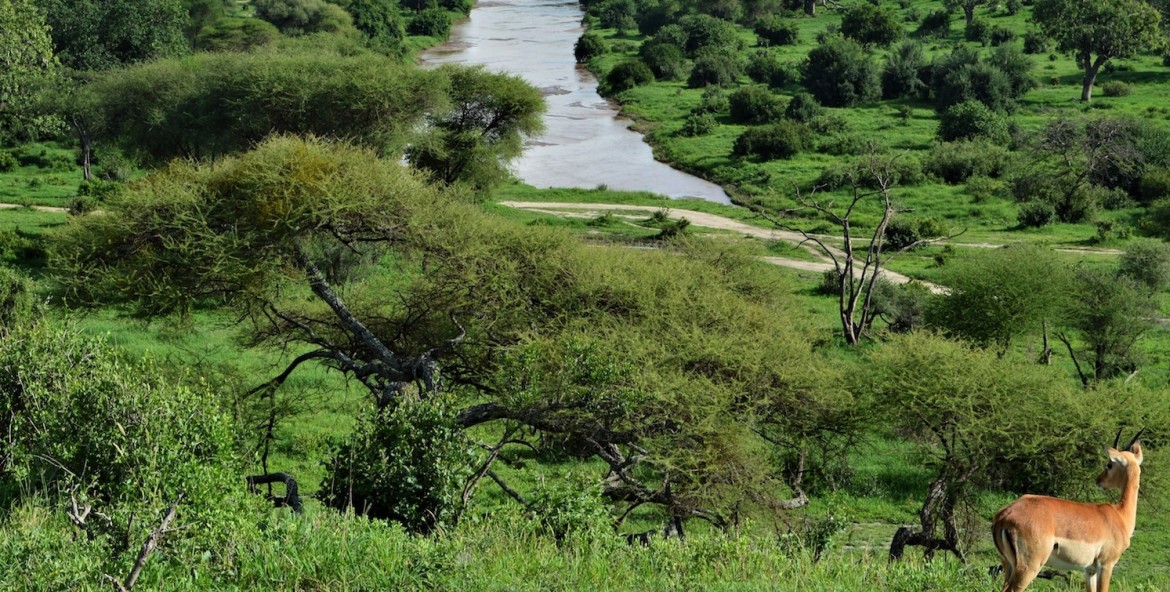
Frequently Asked Questions
Exploring Tanzania during the wet season offers a distinct glimpse into its vibrant ecosystem. Here are some pressing questions and answers about this captivating time in Tanzania.
1. What are the best parks to visit during Tanzania’s wet season?
During the wet season in Tanzania, the Serengeti National Park is a top destination. It is famous for the Great Migration, where millions of wildebeests, zebras, and antelopes journey across the plains. The lush landscape transforms, providing an abundance of food for wildlife. This makes it a fantastic time for safari-goers to visit.
Another excellent park is the Ngorongoro Crater, known for its rich wildlife all year. The rains fill waterholes, drawing animals like elephants, rhinos, and lions closer. The crater’s natural beauty is enhanced by blooming flowers and vibrant vegetation during this time. This park offers an unforgettable experience in a unique ecosystem.
2. How can I best prepare for a safari during the wet season?
Preparation for a wet season safari begins with packing appropriate clothing. Waterproof jackets, sturdy boots, and quick-dry clothing are essential for comfort during rainfall. Also, having insect repellent handy can help address the increased mosquito presence. It’s wise to check the weather forecasts regularly to make the best plans.
Consider choosing experienced safari operators who specialize in wet season travel. They can adjust itineraries based on weather conditions and offer insights specific to this season. Booking accommodations in advance ensures lower rates and choice availability. Being prepared allows you to enjoy the adventure to the fullest.
3. Are wildlife sightings different during the wet season compared to the dry season?
Yes, wildlife sightings do differ during the wet season. Animals are more dispersed due to the abundance of water sources, making them less predictable to find. However, the season provides opportunities to see young calves and birds in variety. The vibrant life and the lush habitat make each encounter special.
Predator interactions can be thrilling, especially during the Great Migration. The lush environment also allows for different animal behaviors to be observed. Rainy periods can bring about unique photo opportunities with dramatic skies and vibrant landscapes. Every safari during this period offers a distinctive perspective on wildlife.
4. Is traveling to Tanzania more affordable during the wet season?
Traveling to Tanzania during the wet season often comes with financial benefits. Many lodges and safari operators offer reduced rates due to the decrease in tourist numbers. This makes it an attractive option for visitors looking to experience the rich wildlife and landscapes on a budget. Deals and discounts are more prevalent during the wet months.
This affordability does not mean a compromise in quality or experience. The natural scenery and wildlife encounters remain awe-inspiring and personal. With fewer crowds, tourists can enjoy more intimate experiences and interactions with nature. Many travelers find this quieter time to be more rewarding and peaceful.
5. What travel challenges might I encounter during Tanzania’s wet season?
Traveling during Tanzania’s wet season presents certain challenges, primarily due to weather conditions. Roads, especially those not paved, can become muddy and difficult to navigate. This can lead to potential delays or changes in planned itineraries. However, for many, this adds to the sense of adventure and discovery.
Safari-goers should be prepared for sudden rain showers, which can affect outdoor activities. Flexibility is key when adapting to changing weather conditions. Despite these challenges, the rewards of witnessing lush landscapes and active wildlife remain unparalleled. Embracing the season with the right mindset enhances the travel experience significantly.

